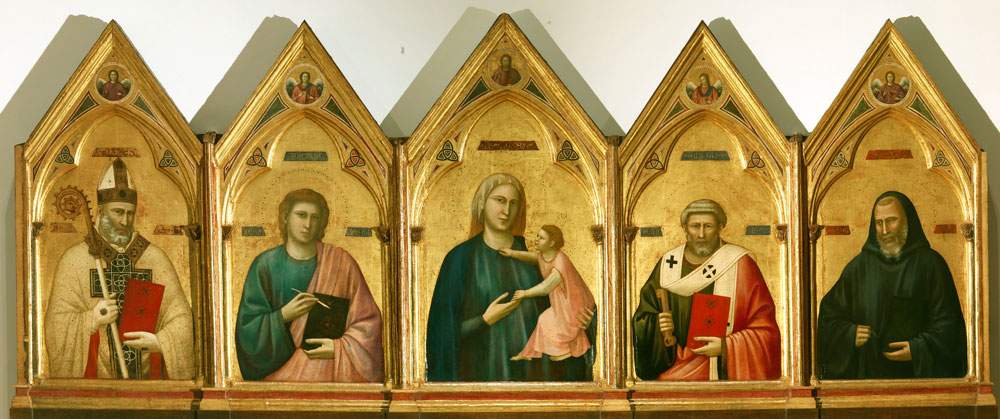From Florence to Ravenna: the Uffizi lends Giotto and other masterpieces for Dante
On the occasion of the exhibition Dante’s Eyes and Mind. The Arts at the Time of Exile to be held in Ravenna to celebrate the 700th anniversary of Dante Alighieri’s death, two masterpieces of medieval painting that are part of the Uffizi Galleries ’ collections will be transferred from Florence to Ravenna.
They are Giotto ’s Badia Polyptych and St. Francis Receives the Stigmata by the Master of the Cross 434. The Florentine museum is also lending Annibale Gatti’s 19th-century work Dante in Exile as part of itsmulti-year cultural collaboration agreement.
The exhibition Le Arti al tempo dell’esilio, curated by Massimo Medica, director of the Musei civici d’Arte Antica in Bologna, will be held from March 6 to July 4, 2021 in the church of San Romualdo in Ravenna: on this occasion, the Uffizi will lend the first works; other loans will then follow on an annual basis for each Dante September, to which will be added the long-term deposit of some works that will be an integral part of the Casa Dante project.
Giotto ’s Badia Polyptych dates from around 1300 and was originally located on the high altar of the Badia in Florence, one of the city’s most important churches, located near Dante’s home. In the ideal itinerary addressed by the exhibition, the work, surely known to the Supreme Poet, is included in the section of the exhibition dedicated to Florence, together with the Saint Francis Receives the Stigmata, datable around 1250, by the Master of the Cross 434.
The works in this first section provide the premise for addressing the themes of the exhibition, which focuses in particular on the period of the poet’s exile, which began in 1302. Rome, Arezzo, Verona, Padua, Bologna, Lucca, Pisa, and Ravenna are some of the cities Dante had the opportunity to visit during those years: following the poet’s wanderings, the exhibition intends to retrace an ideal itinerary of images, a sort of map of his artistic knowledge.
For the reconstruction of Dante’s ’journey’ through works of art traceable to the places of his exile, we start from Florence. The poet’s Florentine origin allowed him to learn about Giotto’s artistic revolution.
“The institutional collaboration between the Uffizi and Ravenna, in cases of important projects such as this one,” said Uffizi Galleries Director Eike Schmidt, "puts the territory and its history in the foreground, enhances its values, promotes knowledge and, last but not least, becomes a key cog in the recovery after the pandemic. The Florentine vernacular became a national literary language thanks to Dante, Giotto spread throughout Italy a new and radical form of expression, the basis of every subsequent artistic development: only by reconnecting with those courageous examples of openness can we make our heritage a social force for the whole country."
Image: Giotto, Badia Polyptych (c. 1300; tempera on panel, 142 x 337 cm; Florence, Uffizi)
 |
| From Florence to Ravenna: the Uffizi lends Giotto and other masterpieces for Dante |
Warning: the translation into English of the original Italian article was created using automatic tools. We undertake to review all articles, but we do not guarantee the total absence of inaccuracies in the translation due to the program. You can find the original by clicking on the ITA button. If you find any mistake,please contact us.




























